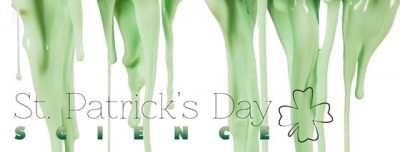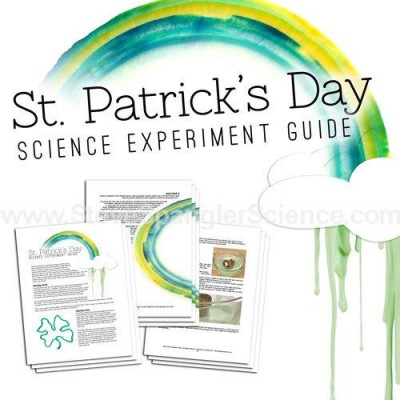Leprechaun Science Secrets – The Best Activities for St. Patrick’s Day
During the month of March, everything starts to turn green, and not just the grass and trees. It’s leprechaun season. Time to catch a sneaky little devil who hides gold coins while wreaking havoc all over.
For years, we have shared our secret for surprising the kiddos on St. Paddy’s Day morning by turning all of the water green in your house. Just unscrew the screen in the faucet, place a blue and yellow Fizzy Tints True Color Tablet inside and carefully screw it back on. Wiping any drips. Don’t use Easter Egg coloring tablets – they will stain. In the morning, when the kids turn on the water, it will run green. You can also drop a few tablets in the toilet to turn that water green too.
But don’t stop there. Take the kids on a journey to explore all of the Leprechaun secrets. Uncover hidden rainbows, fish for Leprechauns with appearing green worms, use a little green magic to grow Leprechaun eggs and inflate a giant eight-foot long Leprechaun sandwich with only one breath.
If your kids like St. Patrick’s Day, they’ll love this Leprechaun Science kit – and you’ll enjoy the opportunity to conduct each of the activities with your young scientist. This kit comes complete with an activity guide and the scientific explanations behind all of the experiments.
The Leprechaun-ologists at the Steve Spangler Science Labs have pulled together all of the best St. Patrick’s Day experiments and activities and put them in a downloadable PDF. This 21-page St. Patrick’s Day Science Experiment Guide contains additional experiments not found in the kit. Some experiments require science materials and others use stuff you can find around the house.
What does it teach?
The St. Patrick’s Day Science Experiment Guide uses different fields of science to capitalize on the St. Patrick’s Day holiday and make it a scientific learning experience that is fun and engaging.
- Air movement and Bernoulli’s principle – The Leprechaun Bag
- Light and refraction – Rainbow Glass and Leprechaun Eggs
- Plants and movement of water – Color Changing Carnations
- Polymers and water absorption – Leprechaun Snow and Green Worms
- Design and fine motor skills – Leprechaun Footprints and Leprechaun Trap
- Chemistry – Leprechaun Rainbow Milk and Leprechaun Treasure Polish
- pH (acids and bases) – Magical Leprechaun Cabbage
- Ultraviolet light and UV-reactive pigment – Rainbow Beads
- Air movement and vacuums – Leprechaun Breakfast
- Non-Newtonian fluids – Green Quicksand






Wow im doing that!
You’ll have to tell me how it came out:D